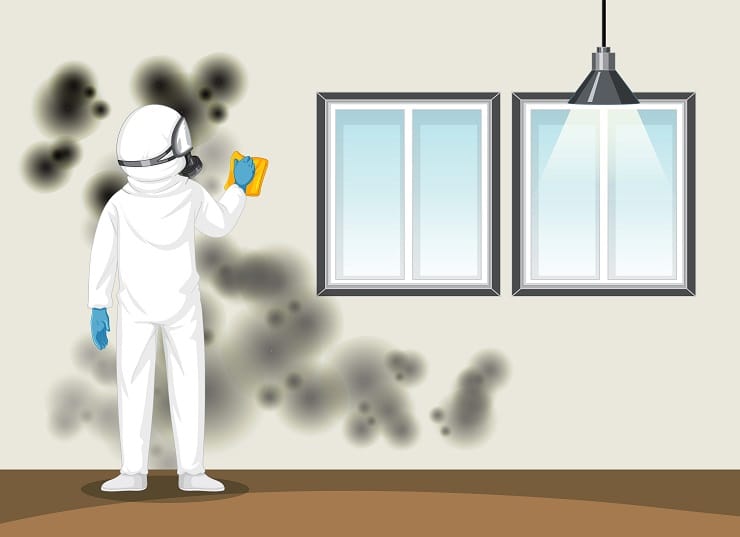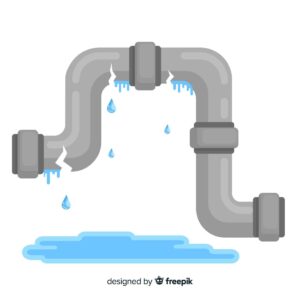Mold is a common problem in many homes, particularly in high-humidity or moisture areas. Not only is mold unsightly and can cause unpleasant odors, but it can also pose serious health risks to you and your family.
Regularly checking for and immediately taking action on applying mold removal from your home is essential for protecting your health, preventing structural damage, and maintaining the value of your property. In this article, we will explore the reasons why it’s essential to keep your home free of mold and the potential consequences of neglecting this issue.
By understanding the risks associated with mold growth, you can take the necessary steps to keep your home mold-free and create a safe and healthy living environment for you and your family.

9 Tips and Tricks to Locate and Remove Molds in Your Home
Molds can happen any time of the year, even in the areas of your home or property that you least expect them to be. Here are some of the best ways to find and remove them from your home.
1. Check for moisture
Molds thrive in moist locations because they require water to grow and reproduce. Mold spores are present in the air all around us, but they won’t grow into mold colonies without moisture. When mold spores land on a moist surface, they can begin to grow and spread quickly.
Molds thrive in damp environments, so check for signs of water damage, leaks, or condensation. Repair any issues as soon as possible.
2. Increase Ventilation
Improving ventilation can help prevent mold in several ways. When air circulates freely, it helps to reduce moisture levels in the air, making it less likely that mold spores will land on surfaces and begin to grow. Proper ventilation can also help to reduce humidity levels in areas prone to moisture, such as bathrooms, kitchens, and laundry rooms.
Ensure your home is properly ventilated, especially in areas with high humidity, such as bathrooms and kitchens.
3. Use a Dehumidifier
When the air in your home is too humid, it can create condensation on surfaces, such as windows, walls, and floors. This excess moisture can provide a perfect breeding ground for mold spores, wleadingo mold growth and various health issues. A dehumidifier works by pulling the excess moisture out of the air, which helps to prevent condensation from forming and reduces the likelihood of mold growth.
A dehumidifier can help remove excess moisture from the air, preventing mold growth.
4. Keep Surfaces Dry
Wipe down surfaces, especially in moisture-prone areas such as bathrooms and kitchens.
5. Use Mold-Resistant Products
Use mold-resistant paint, drywall, and insulation in areas prone to moisture. There are several types of mold-resistant products that are safe to use in your home. Here are some examples:
- Mold-resistant drywall: This type of drywall is made with a moisture-resistant core that helps to prevent mold growth. It is a popular choice for bathrooms, kitchens, and other areas prone to moisture.
- Mold-resistant paint: Some types of paint are designed to resist mold growth, making them a good choice for high-moisture areas. Look for paints that contain mold inhibitors or have antimicrobial properties.
- Mold-resistant insulation: This type of insulation is treated with fungicides and other chemicals that help to prevent mold growth. It is commonly used in attics, crawl spaces, and other areas where moisture is a concern.
6. Keep Indoor Plants in Check
Indoor plants can contribute to mold growth if they are not properly cared for. Here are a few ways that indoor plants can create conditions that are conducive to mold growth:
- Overwatering
- Poor drainage
- Humidity
- Lack of sunlight
To prevent mold growth associated with indoor plants, it’s important to properly care for your plants. This includes providing adequate drainage, not overwatering, and ensuring that your plants receive enough sunlight.
7. Clean Gutters and Downspouts
Clogged gutters and downspouts can cause water to seep into your home, creating ideal conditions for mold growth. The most common cause of clogged gutters and downspouts is a buildup of leaves, twigs, and other debris. These materials can accumulate in the gutters over time, preventing water from flowing freely.
It’s important to regularly clean and maintain your gutters and downspouts to prevent these issues from occurring. This may involve removing debris by hand, using a gutter cleaning tool, or hiring a professional gutter cleaning service.
8. Monitor Humidity Level
Use a humidity meter to monitor the humidity levels in your home, and keep them below 60%.
9. Hire a Professional
If you have a significant mold problem or are unsure how to handle it safely, it’s best to hire a professional mold remediation service.
By implementing these tips and tricks, you can locate and remove mold from your home, ensuring a safe and healthy living environment for you and your family. Remember, preventing mold growth is key, so be sure to take steps to reduce moisture and humidity levels in your home.











